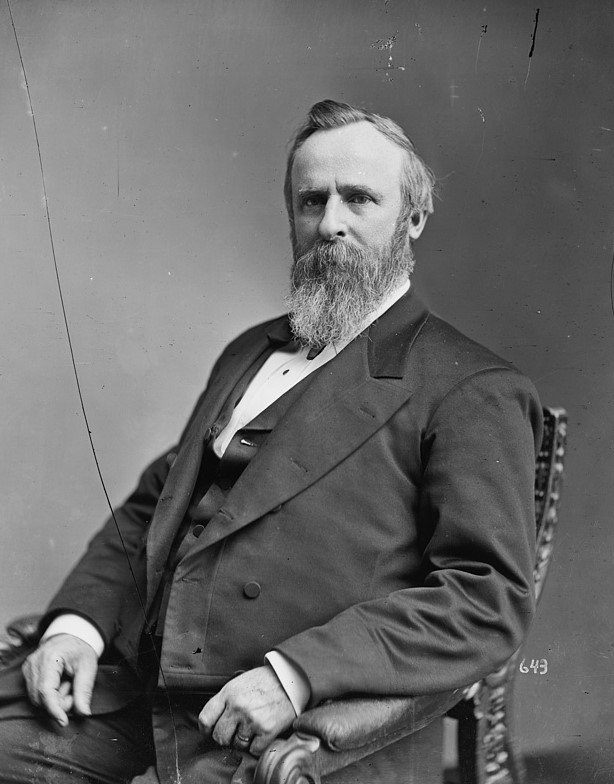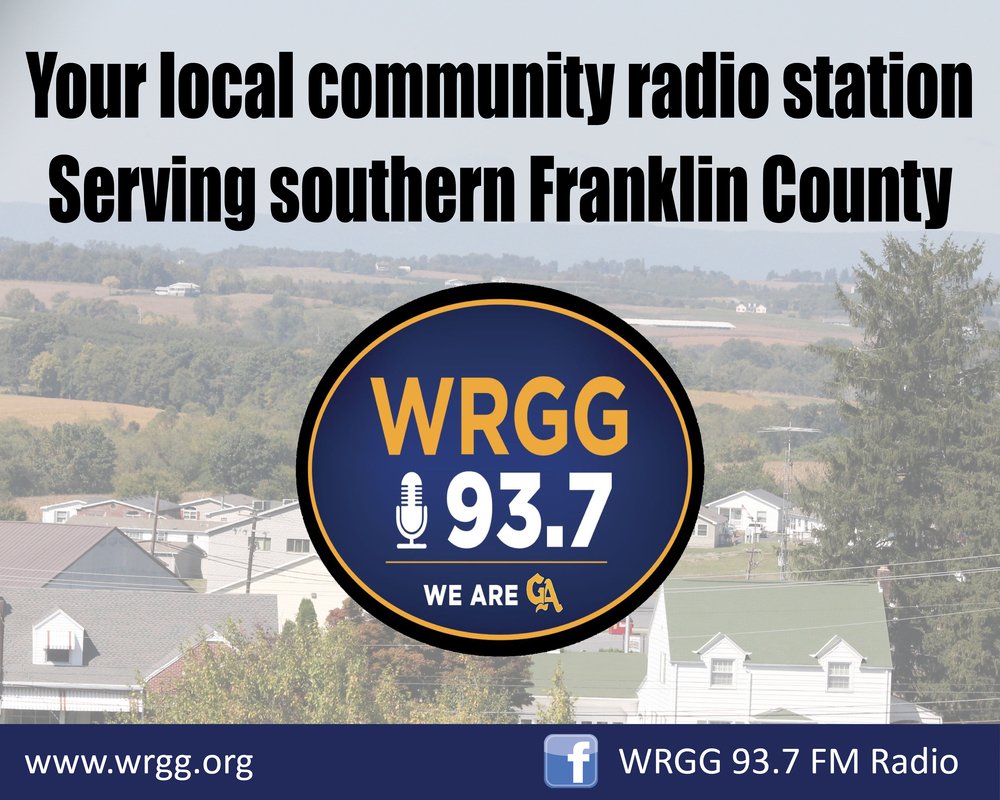Maryland has been called “America in Miniature” since it possesses many iconic national traits like splendid scenery and fascinating history, all found in a small state. Maryland boasts oceanfront territory, rugged mountains, a mighty river, vestiges from yesteryear and hosts bustling cities and charming small towns. One of those notable villages is Boonsboro.
Located in eastern Washington County, Boonsboro is rich with history, and its surrounding area has many attributes that mimic Maryland’s – and America’s – best qualities. Washington County was the first in the nation to name itself after the famous Revolutionary War general and first President. The county’s outline on the map is remarkably similar to Maryland’s overall geographic shape, like the county’s founders purposely drew it that way as a tribute to the mother state.
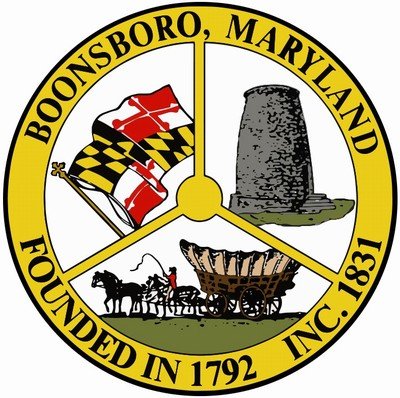
Although its name conjures the famous frontiersman Daniel Boone, Daniel’s cousins, William and George Boone, founded Boonsboro. William came to the area with his wife, Susanna, in 1779. They settled on a 100-acre farm on what is now Boonsboro’s Potomac Street. In 1791, the couple purchased an additional 140-acre tract called “Fellowship,” and with brother George’s help, they laid out a town plan in 1792, originally called Boones Berry.
The new town didn’t flourish at first and experienced a series of name changes – from Boonesberry Town, to Margaretsville (named for George’s wife), and then to Boonesborough. Finally, the name was shortened to present-day Boonsboro (it is unknown why the ‘e’ from Boone was dropped from the name), and the town was incorporated. The village remained a sleepy crossroad collection of a few houses until a major road project was commissioned in 1806.
When the National Road arrived in Boonsboro, the town’s fortunes improved. This historic road was the first byway financed and constructed by the federal government, designed to connect the Potomac and Ohio Rivers. The 620-mile highway eventually reached Vandalia, Illinois, and was an important link between eastern cities and the early American frontier. New technology was utilized on this road, and the first use of “macadam” paved a local roadway section. The National Road brought early travelers to and through Boonsboro.

Today, a road trip along the old National Road (now U.S. Route 40 or Alternate 40) is a nostalgic drive through historic communities like Boonsboro, which retain their old-world charm, preserved architecture and pastoral Western Maryland scenery.
Also during the early 1800s, another major transportation byway was established near Boonsboro when the Chesapeake and Ohio Canal originated. The C&O Canal was also a gateway to the West, designed to use the Potomac River’s water flow for a parallel canal to haul goods between Washington, D.C., and Pittsburgh. However, the arrival of railroads quickly made the canal obsolete, and the C&O only reached Cumberland, Md., before the project was abandoned.
Today, the C&O Canal is a linear National Historic Park that stretches 184 miles, a haven for bikers, walkers, fishermen and history lovers, who enjoy the architectural and engineering legacy the C&O left behind.
As the first state to name a county for George Washington, it’s fitting the first Washington Monument was erected there. In 1827, Boonsboro residents, supervised by local mason Isaac Lutz, marched from town up to South Mountain’s summit. Once onsite, they dry-laid a stone tower on a 54-foot base, reaching a height of 15 feet. Later that year, the monument topped out at 34 feet tall. The well-known 555-foot Washington Monument towering over D.C. wasn’t completed (after suffering a 25-year lapse during construction) until 1885.
The Maryland tribute to George Washington suffered bouts of neglect and vandalism over the years and was first restored by Boonsboro’s Odd Fellows Lodge in 1882. But this smallerWashington Monument later suffered a sizeable crack that wasn’t properly fixed, and it faced collapse. In 1920, a local historical society bought the 1-acre property and deeded it to the State of Maryland as a park site. A third restoration was completed in 1936 by the Civilian Conservation Corps and that rugged stone structure survives.
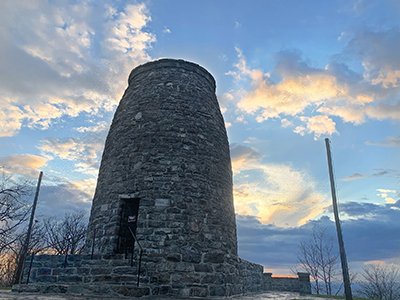
Today, Washington Monument State Park is open from 10 a.m. to sunset (November to March), and the park’s Visitor Center has artifacts and exhibits that interpret the tower’s history. The monument’s open hilltop location is also an excellent birdwatching venue year-round, especially for spotting hawks, eagles and falcons during annual migrations.
Boonsboro saw frontline action after the Civil War erupted. In 1862, residents felt the ground shudder with explosive cannon fire. This signaled the first-ever clash on Northern soil, when Union and Confederate soldiers fought on Sept. 14th at nearby South Mountain. Between the two combatants, they suffered nearly 5,000 casualties. Also called the Battle of Boonsboro Gap, skirmishes were fought at three Appalachian Mountain passes – Crampton’s, Turner’s and Fox’s Gaps. At the latter, two Union generals commanded troops (Hayes and McKinley), and both later became President of the United States.
Three days later, an epic battle at Sharpsburg, only a few miles distant, pulled Boonsboro’s townspeople deeper into warfare’s horrors. After the deadliest day in American military history (23,000 killed, maimed or missing during 12 hours of combat), Boonsboro’s public buildings hosted the wounded and the dying from nearby Antietam.
Washington County grew slowly after the Civil War, and Boonsboro remained a quiet village. The town’s population was 700 in 1900, while today, 3,800 residents live in Boonsboro. One local claim to fame during the quiet 1900s era was the popularity of the town’s “Hearts of Gold” cantaloupes, which solidified the area’s reputation for agricultural products.
During the 1930s, the creation of a new linear park eventually brought millions of hikers through the Boonsboro area. The Appalachian Trail revolutionized how Americans interacted with wilderness. The 2,200-mile trail was the brainchild of Benton MacKaye, and the course he mapped out brought the trail through Maryland along the South Mountain ridgeline. This national treasure benefited many residents by inspiring tourism over the years and spurred new interest in mountain gateway communities like Boonsboro.
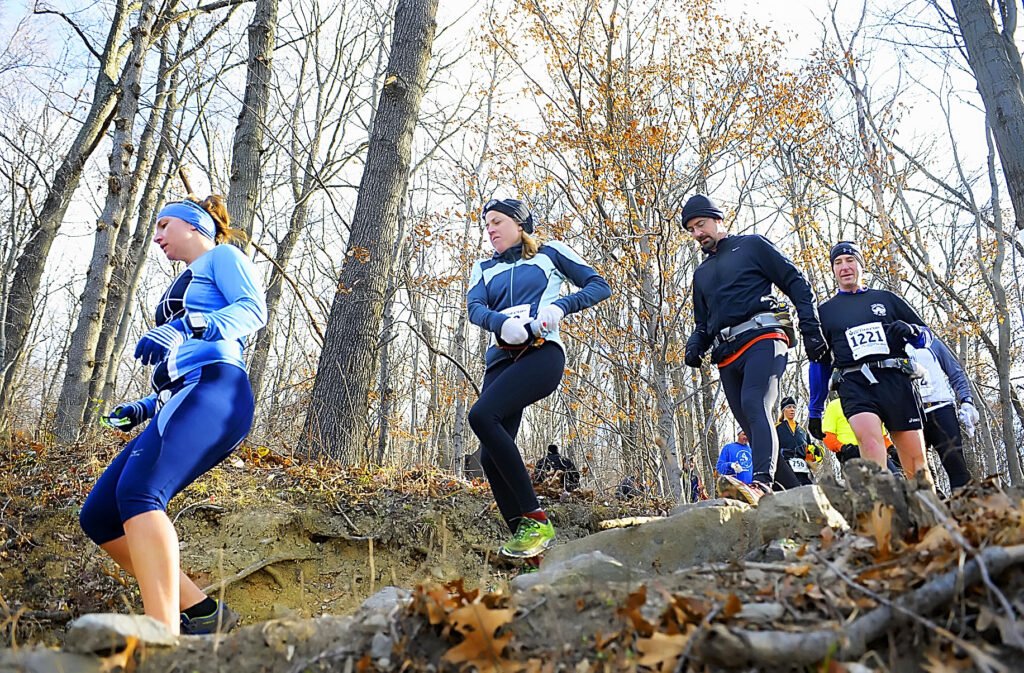
In 1963, a new fitness challenge inspired by President John F. Kennedy asked if hikers or runners could complete a 50-mile distance in a single day. A local running club, led by William “Buzz” Sawyer, created a course that used the area’s scenic and historic trails (the Appalachian Trail and C&O Canal Towpath), and this race started in Boonsboro. Over the years, the event, named the JFK 50-Miler, became an internationally known foot race, and thousands competed. Today, it’s the only remaining ultra-marathon from that 1960s origin, and after 60 continuous years, race day in November still begins with a starter’s pistol in downtown Boonsboro.
Boonsboro has past residents who made Maryland history. William Hamilton was the state’s 38th governor. Another famous Boonsborian was the late Charlotte Winters, who, at age 109, was then the oldest surviving American World War I veteran. While those names may not be familiar to most, a current Boonsboro resident is a literary icon with work beloved by millions.

Author Nora Roberts is one of America’s most prolific and successful writers. After creating more than 200 published works, her romance novels and suspense novels (some written under the pseudonym J.D. Robb) have sold tens of millions of copies. Roberts is a Maryland native, and she lives in Boonsboro. She and her husband own Boonsboro’s “Turn the Page” bookstore (18 N. Main St.), and the Nora Roberts Foundation has a fine reputation for charitable works.
Modern Boonsboro hosts multiple events throughout the year and offers several sites to explore its local history. The National Road Museum recently opened, and the interpretive space at 214 N. Main St. is open Saturdays from 10 a.m. to 3 p.m. The Boonesborough Museum is privately owned and open seasonally (May through September); it boasts an extensive Civil War collection from the Antietam and Gettysburg campaigns. The Boonsboro Trolley Station Museum is housed in the last surviving trolley building in Washington County and is open seasonally from May to October.
After considering Boonsboro’s fascinating history, memorable events and interesting people – combined with its location within a county that closely resembles its host state, a reasonable conclusion can be made. Boonsboro and Washington County are like Maryland in miniature, possessing local qualities that fortify Maryland’s enduring reputation as a state that symbolizes the best qualities found throughout the nation.
